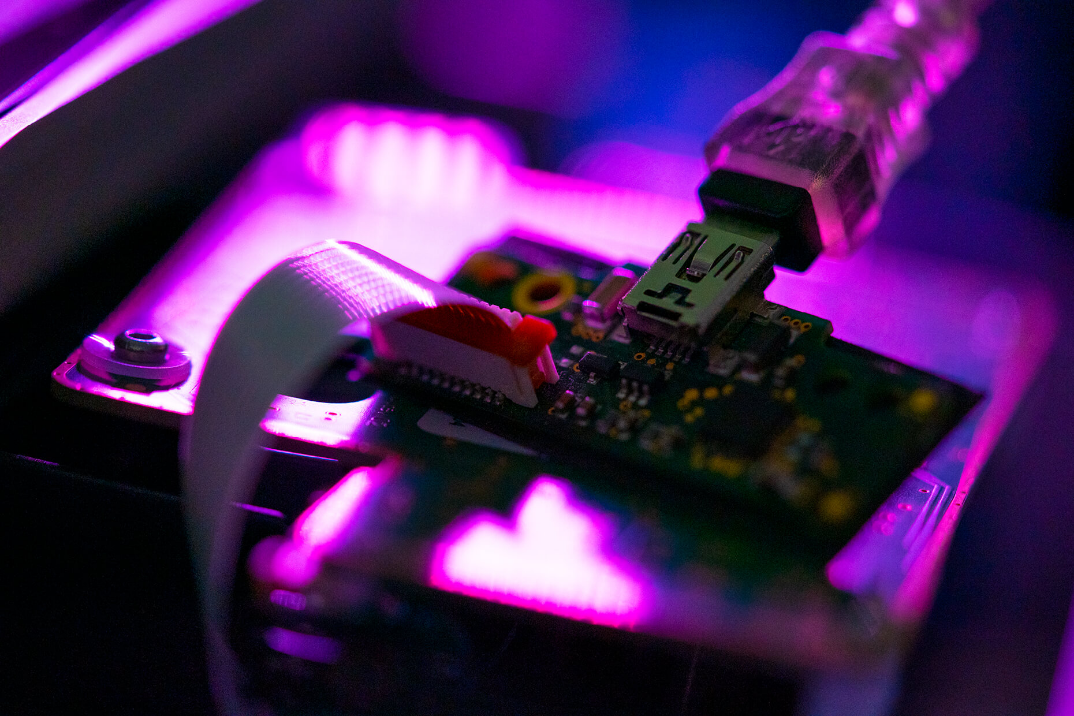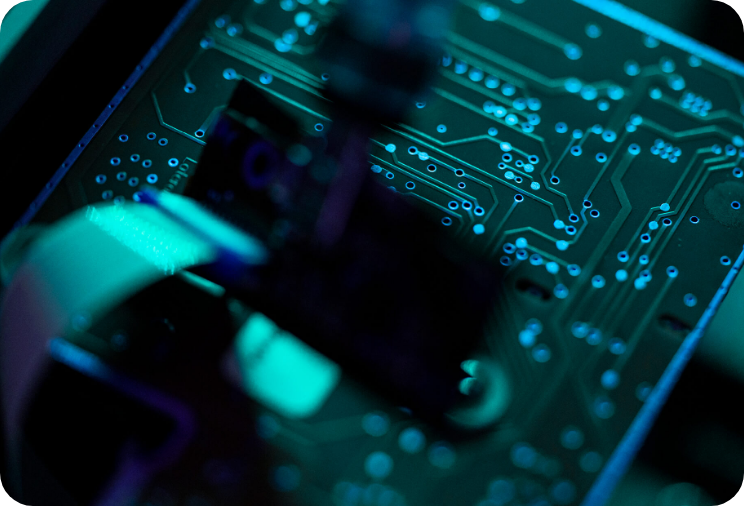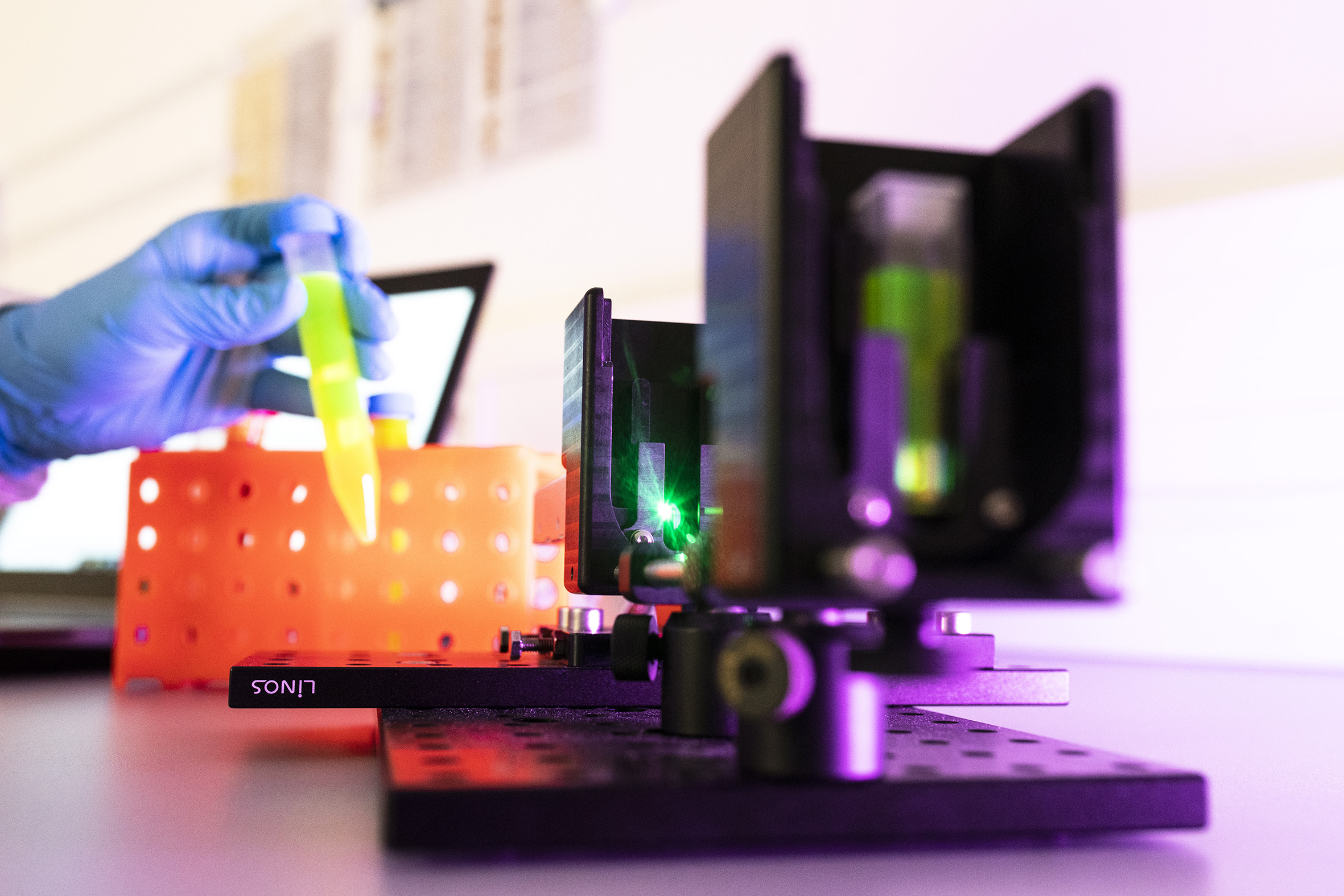We specialize in high-performance optical systems, combining decades of engineering expertise with innovative hardware and software. As an ISO 13485 certified company, we ensure your quality standards are met through robust, ready-to-integrate technology. Our miniaturized confocal fluorescence detector offers lab-grade sensitivity in a compact form. It supports dual-channel detection, enables real-time surface, liquid and solid measurements, and integrates easily into handheld or inline systems.
Our micro-scale, confocal optical system delivers performance comparable to premium spectrometers—packed into a device the size of a credit card. Confocal optics ensure precise fluorescence measurement of volumetric samples, making FluoSens ideal for in-line, on-line, or handheld applications.
- Single- or dual-channel options (up to 2 wavelength simultaneous)
- Laser-level sensitivity, but with LEDs for stable, low-voltage operation (5 V DC)
- Robust lightproof housing protects against dust, humidity & EMI
- Plug-and-play integration via PCB interface




